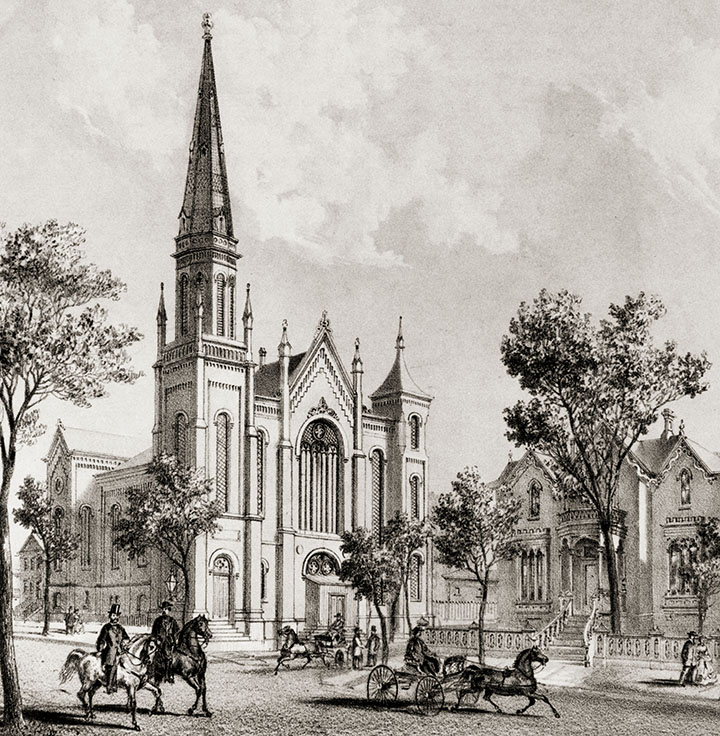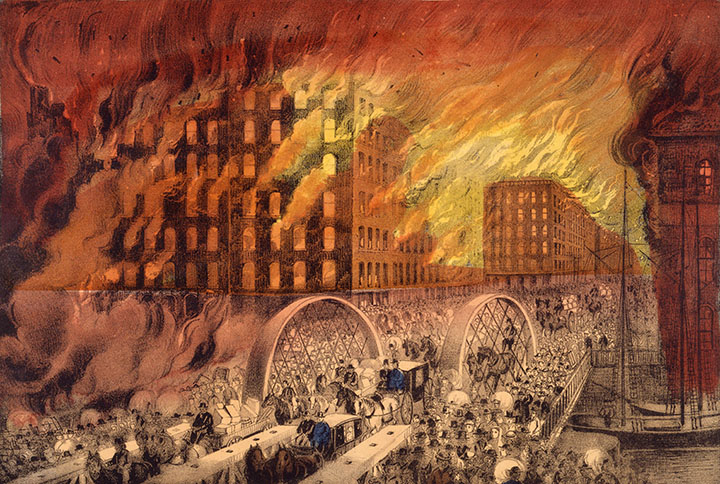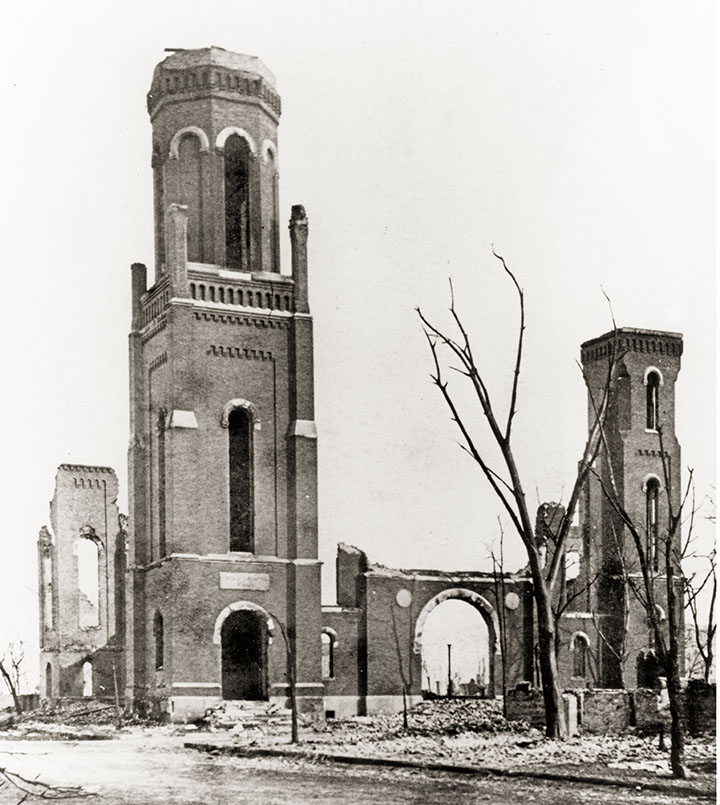A look back at the difficult early years of Fourth Church
On February 12, 1871, the Fourth Presbyterian Church of Chicago was born through the uniting of two congregations: North and Westminster.
North Presbyterian, the older of the two, was home to several powerful and influential Chicagoans, including Cyrus McCormick.
Westminster, on the other hand, had largely been floundering until 1866, when they hired a young professor named David Swing to serve as their pastor—less than four years after Swing had rejected an identical offer from North Presbyterian! Swing’s preaching represented a sharp break from the more orthodox style of the time, and soon he became so popular that Westminster effectively outgrew their tiny wooden church building.
The merger made practical sense: North had a gorgeous church at Grand and Wabash, seating 1,100 people, and Westminster had a pastor who could draw a crowd. But the impetus to combine also stemmed from a wider “Old School–New School” reconciliation that was taking place within Presbyterianism in the wake of the Civil War, culminating in 1869 with a vote to reunite the “Old” and “New” branches.

North Presbyterian Church (built 1861, on the site where Nordstrom is now), which in 1871 became the home of the newly merged Fourth Church congregation
North and Westminster began collaborating in 1870, with North’s pastor, D.C. Marquis, preaching in the morning and Westminster’s pastor, David Swing, preaching in the evening. When Marquis left later that year, Swing decided to resign to make way for a new pastor who could officially unite the two congregations, only to find himself selected as that pastor.
On February 6, 1871, both churches formally requested a merger from the Presbytery of Chicago, and the presbytery declared the church “be hereafter known as the Fourth Presbyterian Church of Chicago.” The atmosphere was jubilant when the congregation was officially dedicated in worship on the morning of February 12, 1871, and even more so when plans were announced to expand and renovate the church to accommodate its explosive growth.
After a summer of construction, the congregation enjoyed its first worship service in the newly renovated space on October 8, 1871. Little did they know, it would also be their last in that building.
That evening, the Great Chicago Fire began. Whether it was started by a cow, rowdy gamblers, or something else, by the time the blaze ended, almost 18,000 buildings had been destroyed (including the newly renovated Fourth Church building), and an estimated 100,000 people were left homeless. Records show 125 of the 130 member families of Fourth Church lost their homes in the fire, as well as 800 people who attended but who were not officially members.

Crowds of people fleeing the 1871 Chicago Fire cross the river, heading north
According to Fourth Church lore, however, there was a small piece of the church that improbably survived—our cherished communion ware! As the fire intensified, a church elder carried the silver items out to the lakeshore and buried them in the sand to protect them from the flames. Unfortunately, the silver was stolen during the widespread looting that occurred after the fire—only to be returned, as the story goes, months later in the dead of night with a note from the thief stating his priest told him during confession to return the silver to its rightful owner.
With the congregation largely homeless, broke, and uncertain about what lay ahead, David Swing began organizing worship services at various locations throughout the city and making appeals to other Presbyterian churches across the country for assistance.

The Fourth Church building after the Chicago Fire (compare to pre-fire illustration above)
Over the next few years, the congregation would worship and work in six different locations, ranging from other church buildings to newly rebuilt homes to McVicker’s Theater. Through the incredible generosity of many across the country—and through a pew rental system—Fourth Church was able to complete a new building at Rush and Superior in January 1874.
The resilient spirit that the church had shown was inspiring and impressive, but it was put to the test once more when Francis Patton, a professor at McCormick Seminary, formally accused David Swing of heresy in April 1874. Swing “has not been zealous and faithful in maintaining the truths of the gospel” and he “does not sincerely receive and adopt the Confession of Faith of this Church,” the charges read. The heresy trial commenced in May 1874.
After three weeks, Swing was acquitted by a 3-to-1 ratio. Patton appealed the case to the more orthodox Synod of Northern Illinois, and when the case concluded over a year later, Swing was found guilty. Rather than appeal to the General Assembly, Swing made the difficult decision to leave Fourth Church and the Presbyterian denomination, making his announcement in October 1875.

David Swing
Swing would go on to found a new congregation, and many of Fourth Church’s members followed him—so many, in fact, that a congregational meeting was called to consider Fourth Church’s future. Though only fifteen people attended the meeting, they concluded that “no question remained that the church would survive the Calamity.”
Calamity is putting it lightly: in a span of five years, Fourth Church had negotiated a merger, renovated a church building that was immediately burned to the ground, had 95 percent of its membership lose their homes, spent two years bouncing around to locations throughout the city, had its beloved pastor convicted of heresy charges, and lost a sizeable portion of their membership when that pastor started a new church. Thankfully, though—and mercifully!—better days were on the horizon for the Fourth Presbyterian Church of Chicago.
• • •